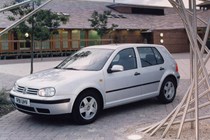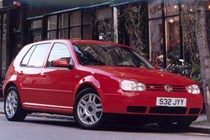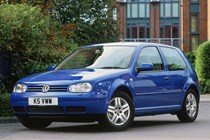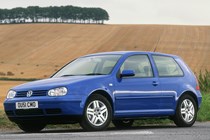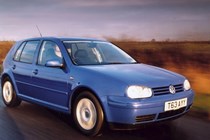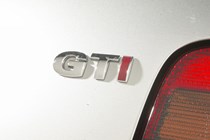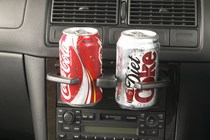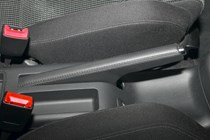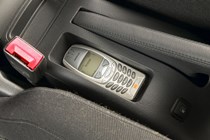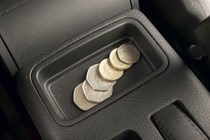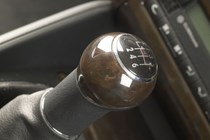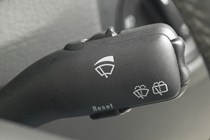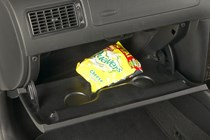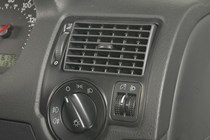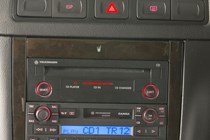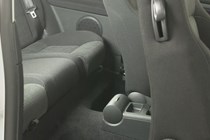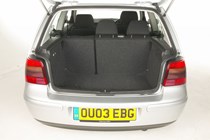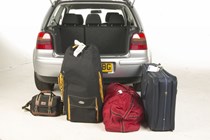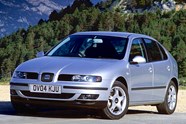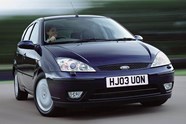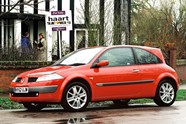
Volkswagen Golf Hatchback (1997-2004) review
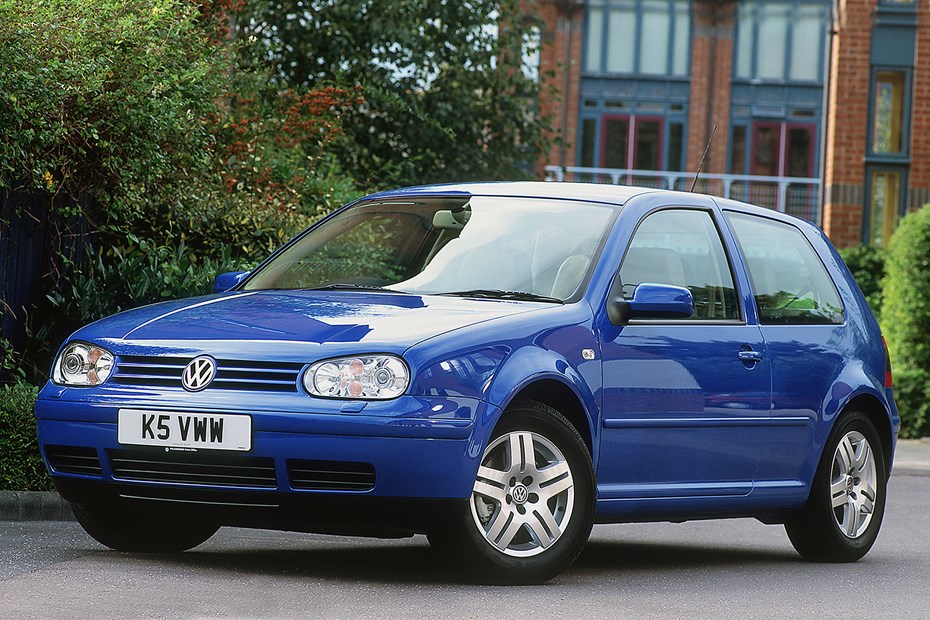
At a glance
| Price new | £10,768 - £23,068 |
|---|---|
| Road tax cost | £195 - £430 |
| Insurance group | 9 - 36 |
Get an insurance quote with

|
|
| Fuel economy | Not tested to latest standards |
| Range | 333 - 653 miles |
| Number of doors | 3 - 5 |
| View full specs for a specific version | |
Available fuel types
Petrol
Diesel
Pros & cons
- Reputation for quality
- Comfortable ride
- GTI models are quick
- Some electrical gremlins
- Not as sharp as the Mk1 Focus
- Top-spec cars need careful maintenance
Volkswagen Golf Hatchback (97-04) rivals
Overview
The Mk4 Volkswagen Golf is quickly approaching modern classic status but, despite its age, it’s still a very desirable used car. Volkswagen leaned on Audi during the Mk4 Golf’s development programme – and that meant it delivered greater luxury, quality and refinement than its predecessor in a very safe package for its age.
Rival such as the contemporary SEAT Leon and Skoda Octavia offer better value for money, while the original Ford Focus is much sharper to drive. But none can offer the same level of sturdiness as the Golf – and to our eyes at least, none look quite so modern. Opt for one of the top-spec diesel models and you reap the benefits of some stellar fuel economy figures, too.
As an added benefit, the Mk4 Golf is an easy car to keep on the road. There’s a growing enthusiast scene for these cars, which means spares are easy to find. It’s also quite an easy car for owners to maintain on their driveways. It was built before the era of infotainment systems and active driver aids – and the electrical components that are there are simple and easy to repair or replace.
Volkswagen Golf Mk4 known faults and common problems
The Mk4 Golf is more than quarter of a century old now, and the rattiest examples are starting to show their years. These range from trifling electrical issues such as faulty window motors and brake light switches to major mechanical problems such as worn suspension and blocked throttle bodies.

As with any used car, it’s vital that you find a Mk4 Volkswagen Golf with a good service history. If you suspect your car has missed a service or know it needs its timing belt replaced, it’s probably best to walk away unless you’re mechanically competent. Scrutinising your purchase in this manner is especially important if you’re buying a high-performance GTI or R32 model, as these cars are more likely to have been driven hard and therefore need a more stringent maintenance programme.
Buying guide
Common issues and what to look for if you’re looking at getting one
1. WINDOW REGULATOR WOES
There are two faults with the Mk4 Golf’s window regulators. First, the plastic clips that hold the glass to the regulator frame are notoriously weak. They can break which will prevent you from lowering the window. Thankfully, you only need to replace the clips – and you can buy aftermarket options made from metal, so you’ll never need to do the job again.
The second fault is more serious. The cable that pushes and pulls the window mechanism is also rather weak – and if that breaks you might need to replace the entire window winder mechanism. It’s an enormous faff because you need to take the door apart to do so.
2. SLUGGISH ACCELERATION
Again, this can be due to a range of faults. The most common issue is that your engine’s mass air flow sensor (MAF) has become caked in oil, and the ECU can’t get a clean reading from it. Sometimes you can get away with just cleaning the MAF.
You’ll need to take your engine inlet apart, remove the sensor and soak it in either some isopropyl alcohol or a specialist throttle body cleaner until the muck lifts off. If, after you reassemble your inlet, you still have a flat spot, you might need to replace the sensor.
3. RATTLE UNDER ACCELERATION
Don’t assume the worst. This might not be a rod trying to escape from your engine. The Mk4 Golf has weak front centre exhaust mounts which commonly snap off. If you hear a rattle, switch the car off and wait for the exhaust to cool down, then get underneath it and shake the exhaust around. If you can hear a knocking noise, you’ve found the culprit.
If you want to fix it properly, you can weld the hanger back onto the exhaust tubing. If you’re in a pinch and need a faster fix, simply find a sturdy jubilee clip and lash the exhaust to the body.
4. SUSPENSION CLONKS
Surprise, surprise – this can come from more than one issue. The two most common faults are worn anti-roll bar bushes and ruined rear axle bushes. In both cases, they’ll need to be replaced to make the noise go away. If you have a sporty GTI model, you could consider swapping the standard rubber bushes for tougher poly bushes to tighten up your car’s handling.
5. ROUGH RUNNING AT IDLE
If your 1.8-litre turbo Golf sounds like a bag of spanners falling down a staircase at idle, (and you’ve replaced or cleaned the MAF sensor), make sure its ignition coils are happy. They’re prone to fail on cars built after 2001 and will need to be replaced.
If you want to be extra sure, you can take the car to your local mechanic and ask them to use their diagnostic tool to check the car’s ECU for misfires. The coils are mounted on top of the engine, so they’re relatively easy to replace. Remember to change the spark plugs while you’re there.
6. BLOWN HEADLIGHT BULBS
The Golf isn’t any more likely than any other car to blown headlights but replacing them can be a real headache because you need to take the entire front end apart. The driver’s side is a doddle but, to gain the access required on the passenger’s side, you might need to remove the front bumper and the battery. Just something to beware of before you buy.
7. REAR WASHER DOESN’T WORK
The washer hose leading to the rear screen jet can work its way loose. It commonly detaches in one of two places. The first is at the motor by the washer bottle. That’s easy to fix – just shove it back on the outlet. The more worrying fault is when it detaches in the car’s pillar or roof lining. Then, it’ll leak washer fluid all over your interior, which you’ll need to dismantle to gain access for the repair.
8. WINDSCREEN WIPERS
The Golf Mk4’s windscreen wiper mechanism often seizes. There are two fixes depending on how brave/skilled you are. The first is to remove and dismantle the mechanism, clean off all the corrosion, seal with paint, grease, reassemble and refit. The easier (and potentially more expensive) option is to simply replace the entire mechanism.
9. COOLING FANS AREN’T WORKING
Some versions of the Mk4 Golf suffer from dicky cooling fans that don’t work when the air conditioning is on. You’ll know if they aren’t working if you can watch the temperature needle climb around the gauge when you’re sitting in traffic. The problem is caused by a poor-quality low speed resistor in the fan motors, which is known to fail.
To check whether your car’s cooling fans are faulty, turn the engine on, switch the air conditioning on, make sure the ‘economy’ mode switch is off, then check if your fans are running constantly. If the fans stay still, then thrash themselves into the radiator like a Spitfire propellor, then stop, they’re probably broken. You’ll either need to replace them or (if you’re handy with a soldering iron), you could add your own resistors to the car’s electrical system and splice them into the fan wiring. Some owners have seen success with this method.
10. BRAKE LIGHT SWITCH FAILURE
Self-explanatory, this one. If your car doesn’t illuminate its brake lights when you step on the pedal, the first thing you should check is the brake light switch. It another notorious failure point and, thankfully, it’s an affordable and relatively easy fix. Just make sure you get the correct part for your year of car. Volkswagen fitted the Golf with several types during its production run.
What models and trims are available?
During its seven years on sale, Volkswagen sold the Golf in a multitude of trim levels. The range opened with the most basic E model, which features cloth seats, central locking and steel wheels. Above that was the S, which gained an electric sunroof, front electric windows and electrically adjustable and heated door mirrors. SE cars were fitted with air conditioning and central locking.
At the top of the range is the GTI, which was fitted with a rather brilliant turbocharged 1.8-litre four-cylinder petrol engine. It churns out 180hp and allows the Golf to hit a top speed of 138mph. Plus, it came with all the equipment Volkswagen could throw at a car in 1990s, such as alloy wheels, a CD player, metallic paint, sports seats with lumbar support and front fog lamps.
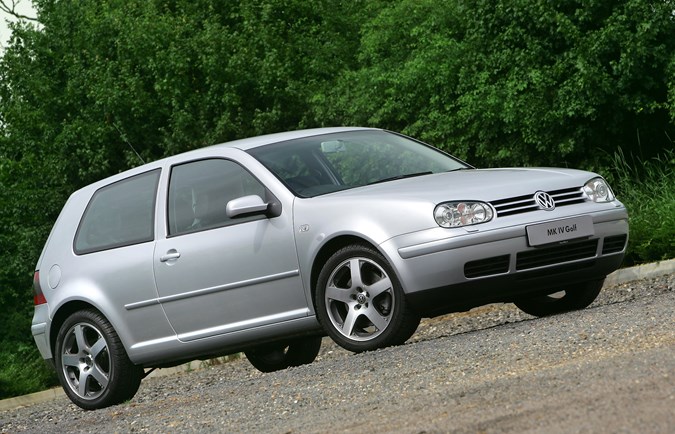
There are a couple of outlying specification, too, such as the Anniversary trim which was loaded with the same level of tech as the GTI. There was also the bonkers R32 model that came with a 240hp 3.2-litre V6 petrol engine and four-wheel drive. These days, those cars are highly sought-after collectors’ items.
Practicality
The Golf has quite a small body by modern standards, which makes it easy to park and drive around town. Despite this, it’s also comfortable and spacious enough to not be uncomfortable on the motorway – and refinement is good enough to allow you to sustain hours on end at 70mph.
Boot space is good, too. There’s 330 litres available with the rear bench in place, which is for a family holiday if you’re cunning with the packing. To put that into perspective, the latest Mk8 Golf only offers an extra 50 litres of space.
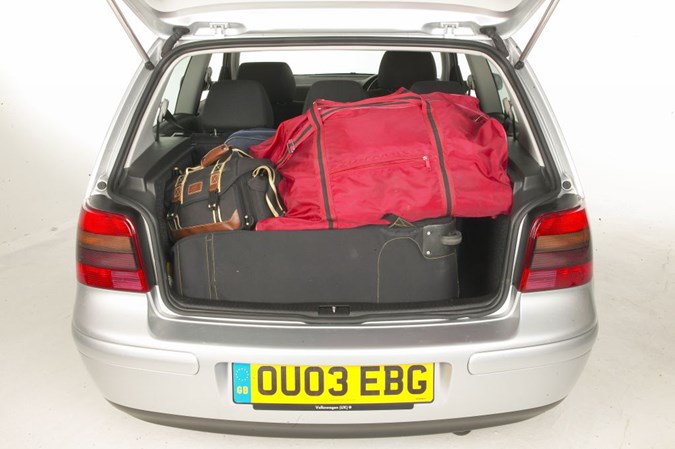
Inside, there’s a world of hidden storage to discover, including cupholders and hidey holes for sunglasses and wallets. The door pockets are a good size, too. Just watch out for the glovebox. It’s known to squeak and rattle.
Interior and comfort
Anyone can get comfy in a Golf. The supportive seats offer plenty of adjustment while the simple dash layout and good driving position make it an easy car to get on with. All the controls are accessible and feel superbly engineered, although the small stereo controls are a little fiddly to use on the move.
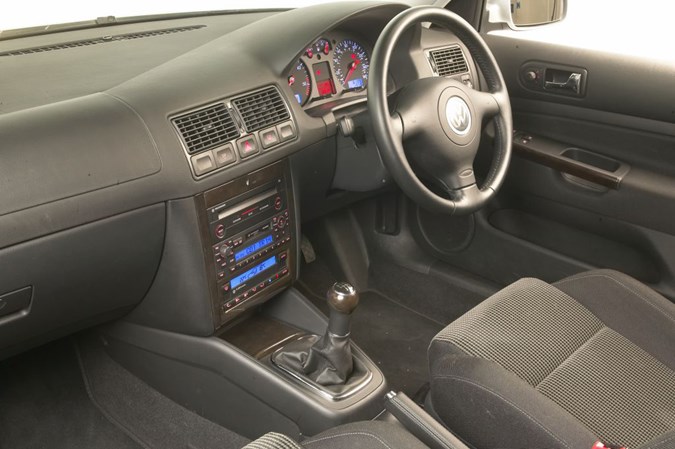
The cabin is impeccably finished and puts some bigger and pricier models of the era to shame. Space is well used and although rear space is limited on the three-door, the seats are very supportive and give a cosseted feel. It’s fine in the back for a couple of growing kids, but adults will find it cramped. The seats are comfy and access in the three-door version is good, making it easy enough to get in and out of while retaining the peace of mind that your children don’t have doors to open.
What’s it like to drive?
Solid and unexciting sums it up. There’s a huge choice of engines and they’re all good. Petrol units range from the humble 1.4-litre to the sporty 1.8T and smooth V5, but the middling 1.6-litre should be fine for most people.
Diesel and sporty versions get all the attention and they Pumpe Düse common rail technology. Just watch out for smokiness and excess oil consumption. The diesels are noisy, but they offer punchy performance and return upwards of 49 mpg. That’s respectable by modern standards, let alone the late 1990s.

The Golf offsets its stellar efficiency with slightly blunted handling. It certainly lacks the edge you find in a Mk1 Ford Focus or Peugeot 306, but this doesn’t make it any less desirable. This model is much more refined than its predecessor and it feels composed and safe.
The steering is its weakest link being almost devoid of feel, but the ride is smooth and the result is a competent and relaxing drive. It’s quiet on the motorway, it’s good in town and easy to slot into a tight space in the supermarket car park. In summary, you want the Focus for the B-road thrash, but the Golf for the drive home.
Ownership and running costs
As we mentioned above, the frugal 1.9-litre diesel can return around 50mpg, and the petrol models aren’t bad either. Insurance for the hatchback can be high – particularly for GTI models – but smaller 1.4-litre variants are more affordable to insure. Servicing and spares are still fairly easy to source, too, especially if you use one of the myriad of specialists across the country.
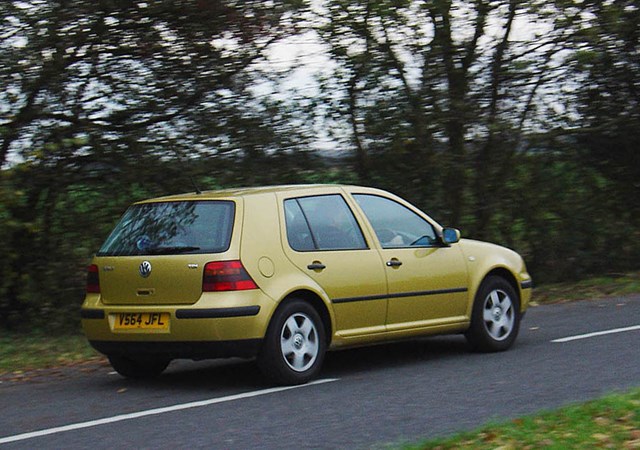
There have been plenty of minor problems reported that upset owners who thought that everything in life should be as reliable as a Volkswagen. The 1.8-litre turbo engine had well-publicised ignition problems plus there were issues with door locks and windows, and general flakiness with the electrics.
Safety
The Golf received a four-star Euro NCAP rating in 1998. Just remember, you can’t compare that rating to a modern car. Automotive safety technology has come a long way in the past two decades – and the Mk4 Golf doesn’t have any of the active safety equipment you’ll find in the latest model. The driver is the active safety gear, here.

Still, you get ABS, a strong bodyshell that crashes well and airbags for the driver and passenger. There are side airbags, too, to protect you in the event of a side impact. On the security front, all cars also get an immobiliser, remote central locking and deadlocks, while SE and GTI versions have an alarm, too.
Should you buy a used Mk4 Volkswagen Golf?
It’s certainly a tempting idea. We shopped for used Mk4 Volkswagen Golfs for sale and found that you can pick up a ratty car for less than £1,000. However, tidy examples seem to change hands for around £2,500 – and, at that price, you’re getting an awful lot of car for your money.
The Mk4 Golf might not be the best-driving hatchback from the late 1990s, but it’s one of the sturdiest. The fact there are still so many pottering around British roads is testament to their longevity. Exciting handling isn’t the be-all-and-end-all, either. Sometimes, all you need is a car to get you around the country comfortably – and the Golf can deliver that.
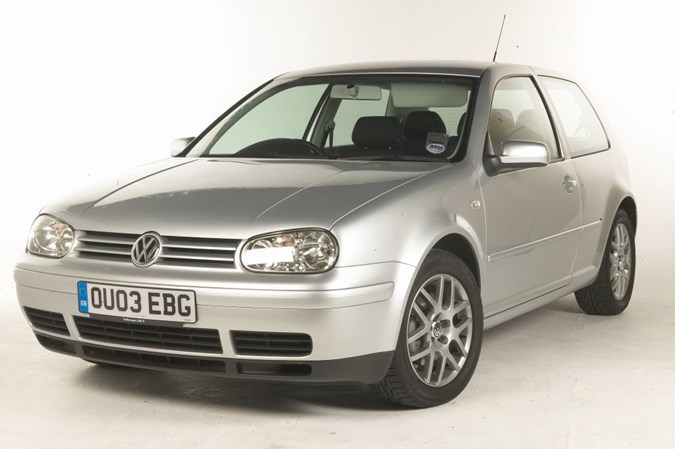
There are a few problems to watch out for. The faulty cooling fans and broken window regulators are particularly irritating problems to solve, but if you walk into your viewings with a level head, you’ll soon learn how to weed out the rotters. And because there’s still such a healthy stock of cars, there’ll always be another one for you to view.
If you’re on a budget and want a practical, (mechanically) reliable and efficient hatchback, you can’t really go wrong with a Mk4 Volkswagen Golf. Shop with our blessing.





